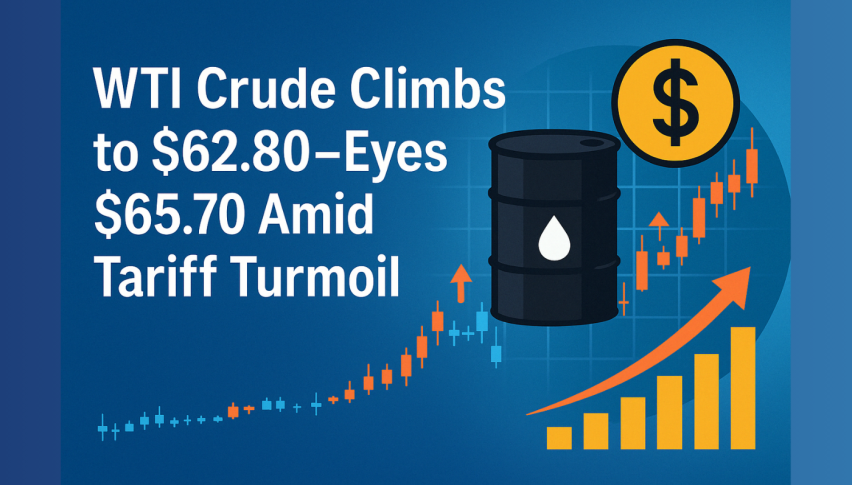Crude Oil Prices Rebound Amid Elevated Global Tensions Despite EIA, OPEC
Crude Oil prices have resumed the uptrend again despite higher EIA inventories and OPEC supply boost, with WTI trading at $71.50.

Live USOIL Chart
Crude Oil prices have resumed the uptrend again despite higher EIA inventories and OPEC supply boost, with WTI trading at $71.50.

Early 2024 Price Decline & Economic Concerns
Crude oil prices experienced a sharp drop in January and February, with WTI crude falling below $65 per barrel by early March. This decline was largely driven by global economic slowdown fears and expectations of a resolution in the Gaza and Ukraine-Russia conflicts, which had previously contributed to a risk premium on oil prices.
Geopolitical Tensions Revive the Oil Risk Premium
However, recent events have shifted market sentiment. Renewed Israeli airstrikes on Gaza and Ukraine delaying peace talks have reignited geopolitical risks, causing oil prices to stabilize and regain some of their lost value.
US Crude Oil Inventories on the Rise
According to the American Petroleum Institute (API), U.S. crude oil stockpiles increased by 6.037 million barrels for the week ending March 28, following a 4.6 million barrel decrease the previous week. Data analysis from Oilprice reveals that crude oil inventories have grown by nearly 23 million barrels in 2024.
Market Reaction & Current Oil Prices
Despite the larger oil stockpile buildup, WTI crude traded at $71.50 per barrel, up $2 from the previous week, although it fell $0.50 (-0.70%) during the day to settle at $70.70.
While oil prices remain volatile, the market is currently balancing rising geopolitical risks with growing crude oil supplies. If tensions in Gaza and Ukraine persist, the risk premium on oil could increase further, pushing prices higher. However, if economic concerns dominate, downward pressure may return. Investors are closely watching both geopolitical developments and inventory reports for further price direction.
US Weekly Petroleum Inventory Report: Key Highlights & Market Impact
Crude Oil Inventory Data (EIA Report)
Crude oil inventories: +6.165M barrels (vs. -2.116M expected)
Previous report: -3.341M barrels
Gasoline inventories: -1.551M barrels (vs. -1.720M expected)
Distillate inventories: +264K barrels (vs. -1.013M expected)
Refinery utilization: -1.0% (vs. +0.7% expected)
API Private Inventory Data (Earlier Report)
Crude oil: +6.037M barrels
Gasoline: -1.628M barrels
Distillates: -11K barrels
Crude oil stockpiles have increased more than anticipated, according to the data, which may be a sign of either more production or lower consumption. There were few significant shocks because the adjustments in gasoline and distillate stocks were expected. The decline in refinery utilization raises the possibility of less refining activities, which could affect the supply of fuel.
Prior to the release, crude oil prices stayed unchanged, suggesting that traders had already taken the API data from the previous session into account. Although the results are disheartening, they are not wholly unexpected and are consistent with the API’s assessment. If this pattern persists, it may drive down oil prices until it is countered by more robust demand or supply interruptions.
US Crude Oil WTI Live Chart
- Check out our free forex signals
- Follow the top economic events on FX Leaders economic calendar
- Trade better, discover more Forex Trading Strategies
- Open a FREE Trading Account




